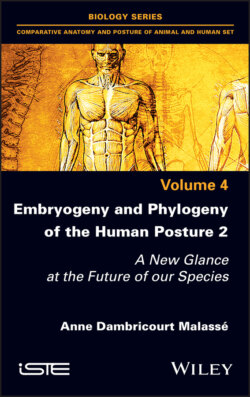Читать книгу Embryogeny and Phylogeny of the Human Posture 2 - Anne Dambricourt Malasse - Страница 14
1.2.3. The first Neanderthal Man in French territory and his ancestor in Germanic lands
ОглавлениеIn August 1908, France discovered its first skeleton of Neanderthal Man in southwest Corrèze, in a small cave in the commune of La Chapelle-aux-Saints. The skeleton was of an adult, it was articulated, and therefore had not moved since its burial. The discoverers were the three Bouyssonie brothers, Amédée (1867–1958), Jean (1877–1965) and Paul (1887–1972). It was almost complete and analyses of the burial conditions confirmed its intentional origin. The Muséum de Paris purchased the fossil and added it to the paleontology collections, rather than the anthropology collections. The skeleton was therefore under the responsibility of Marcellin Boule. A Neanderthal could finally be compared to the Cro-Magnon Men.
At the beginning of the 20th century, the Muséum became the leading research establishment in Europe because of the importance of its collections and the organization of its teaching and development with 16 chairs. The research of the extinct anatomical stages between fossilized monkeys and Homo sapiens had finally found its institutional basis. Study of the Neanderthal skeleton was entrusted to the chair of paleontology, at the head of the largest fossil collection in the world. This choice formalized the birth of evolutionary human paleontology as an academic discipline. It was a consecration to the memory of Jean-Baptiste Lamarck who had dared to imagine a century earlier, in 1802, a mere 100 m away, the inconceivable filiation of present-day apes and Man from a line of common ancestors. It was recognition for the posterity of Etienne and Isidore Geoffroy Saint-Hilaire, who for years fought against the dogmatism of Georges Cuvier and his many disciples. It was an immense gratification for Albert Gaudry, who carried the gallery of Paleontology and Comparative Anatomy at arm’s length, both seen as second-order disciplines, classifiers, with no interest in the real concerns of the human condition.
Gaudry died on November 27, 1908, a few days before the presentation of the skeleton from La Chapelle-aux-Saints to the Académie des sciences by the director of the Muséum on December 14, 1908. From now on, Homo sapiens could set off in search of its anatomical, cultural and spiritual origins, in the long history of the Earth, discovering very old rituals celebrating the departure of a deceased person, whether Sapiens or Neanderthal. The Biblical Genesis was nothing more than a collection of texts written by humans who disappeared more than 2,000 years ago, one moment among many, in the continuity of distant human lineages where the questioning of the meaning of gestures was already consciously manifested, up to the killing of the hunted animal and the human, sometimes consumed. Prehistory was the true book of memory that kept the traces of the emergence of consciousness and its search for meaning. Its archives confirmed the singularity of humanization with the need to signify and to signify oneself, from conception to death, the need to name in order to make the collective understanding of a common reality in permanent interaction with the world intelligible.
While France discovered its Neanderthal, a German industrialist with a passion for the origins of Man, Otto Schoetensack (1850–1912), obtained a Hominid mandible in a sandpit that he had carefully monitored near the village of Mauer in the Heidelberg region. The jaw was short and broad, massive, with a low mandibular ramus that was very extensive on the surface, corresponding to a powerful masseter (masticator) muscle and a pronounced prognathic symphysis that excluded it from the Homo sapiens morphology (Schoetensack 1908). Its stratigraphic position was well identified and gave it a much older age than the Neanderthal of La Chapelle-aux-Saints. Schoetensack named the fossil Homo heidelbergensis. Its recent dating is 600,000 years old, that of La Chapelle-aux-Saints is 60,000 years old. Prince Albert 1st of Monaco visited Marcellin Boule in his paleontology laboratory in Paris. Prehistory and human paleontology did not have a research center. The materials from the excavations, both archeological (tools carved in stone, bone and ornaments) and fauna, were stored in the museums and there was no specialized study laboratory, and consequently, no teaching chair. It was then that a large-scale project took shape with the Prince and Henri Breuil, supported by Marcellin Boule. Animal fossils had their cathedral in the Jardin des Plantes, human fossils would have their palace outside the walls of the Garden, thanks to a foundation offered by the Prince under French law and recognized as being of public utility.
In France, a foundation is “a patronage organization that makes a patrimony available to serve a cause of general interest. It is created by decree in the Council of State, after the request has been examined by the services of the Ministry of the Interior”.
